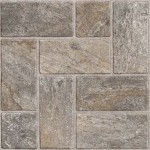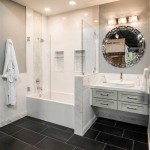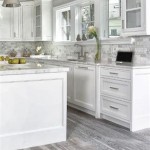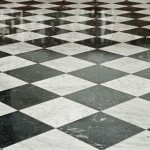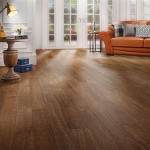How to Choose Hardwood Flooring
Hardwood flooring remains a highly desirable option for residential and commercial spaces due to its durability, aesthetic appeal, and potential to increase property value. Selecting the right hardwood flooring, however, requires a comprehensive understanding of various factors, ensuring a long-lasting and satisfactory investment. This article provides a detailed guide to navigating the selection process, covering key considerations and offering practical advice.
Understanding Hardwood Types: Solid vs. Engineered
The first crucial decision involves choosing between solid and engineered hardwood flooring. These are distinct products with different constructions and characteristics.
Solid Hardwood: This type consists of a single piece of wood, typically ¾ inch thick. Solid hardwood is known for its longevity and potential for refinishing multiple times throughout its lifespan. This allows it to be sanded down and re-stained to refresh its appearance or adapt to changing design preferences. Solid hardwood is generally more susceptible to moisture fluctuations, making it less suitable for basements or areas with high humidity.
Engineered Hardwood: Engineered hardwood is constructed from multiple layers of wood veneer bonded together. The top layer, known as the wear layer, is made of solid hardwood, providing the desired aesthetic. The underlying layers are typically made of plywood or other composite materials, lending the flooring greater stability and resistance to moisture. Engineered hardwood is often a preferred choice for basements, kitchens, and bathrooms where humidity levels are more variable. The thickness of the wear layer determines how many times the floor can be refinished. Some engineered hardwood floors cannot be refinished at all.
When evaluating these options, the intended location and environmental conditions are paramount. Solid hardwood thrives in stable environments with consistent humidity, while engineered hardwood offers greater flexibility in less controlled settings.
Examining Wood Species and Their Properties
The species of wood used in hardwood flooring significantly impacts its appearance, durability, and cost. Different species exhibit varying grain patterns, colors, and hardness levels, influencing both the aesthetic and performance of the floor.
Hardness: Wood hardness is measured using the Janka hardness scale, which determines the force required to embed a steel ball into the wood. A higher Janka rating indicates a harder, more durable wood that is less prone to dents and scratches. Common hardwood species and their approximate Janka ratings include:
- Red Oak: 1290
- White Oak: 1360
- Maple: 1450
- Hickory: 1820
- Brazilian Cherry (Jatoba): 2350
Choosing a species with an appropriate hardness level depends on the anticipated foot traffic and potential for impact. High-traffic areas, such as hallways and kitchens, typically benefit from harder species like hickory or Brazilian cherry. For bedrooms or less frequently used spaces, softer species like red oak may suffice.
Appearance: The natural color and grain pattern of the wood contribute significantly to the overall aesthetic of the space. Light-colored woods, such as maple and ash, can create a bright and airy atmosphere, while darker woods, such as walnut and cherry, offer a more sophisticated and traditional look. Grain patterns vary widely, ranging from the subtle, consistent grain of maple to the pronounced, swirling grain of oak. Consider how the chosen species complements the existing décor and overall design scheme.
Cost: The cost of hardwood flooring varies significantly depending on the species. Exotic or less readily available species, such as Brazilian cherry and teak, tend to be more expensive than domestic species like oak and maple. Considering the budget constraints is an important factor in selecting the wood species for the project.
Understanding Finishes and Their Impact
The finish applied to hardwood flooring not only enhances its appearance but also provides protection against wear and tear, moisture, and stains. Various types of finishes are available, each offering distinct characteristics and levels of durability.
Polyurethane: Polyurethane is a commonly used finish known for its durability and resistance to scratches and water damage. It is available in oil-based and water-based formulations. Oil-based polyurethane provides a richer, amber-toned finish but emits stronger odors and takes longer to dry. Water-based polyurethane is lower in VOCs (volatile organic compounds), dries more quickly, and offers a clearer finish, preserving the natural color of the wood.
Penetrating Oil: Penetrating oil finishes, such as tung oil and linseed oil, soak into the wood fibers, enhancing the natural grain and color. These finishes provide a matte appearance and require regular maintenance, including reapplication every few years. Penetrating oil finishes are less resistant to scratches and water damage compared to polyurethane.
Aluminum Oxide: Aluminum oxide is a highly durable factory-applied finish that provides excellent resistance to scratches and abrasion. It is typically used on engineered hardwood flooring. Aluminum oxide finishes are often more difficult to repair than other types of finishes.
UV-Cured Acrylic: This type of finish is cured by ultraviolet light, creating a durable and scratch-resistant surface. UV-cured acrylic finishes are often found on prefinished hardwood flooring and offer good resistance to wear and tear.
The choice of finish should align with the anticipated level of traffic and exposure to moisture. For high-traffic areas, a durable finish like polyurethane or aluminum oxide is recommended. For a more natural look with regular maintenance, a penetrating oil finish may be suitable.
Understanding Grades and Cuts of Wood
Hardwood flooring is graded based on its appearance, which includes variations in color, grain, and the presence of knots and other natural characteristics. Different grades offer varying levels of uniformity and aesthetic appeal.
Select Grade: This is the highest grade of hardwood flooring, characterized by minimal color variation, few knots, and a generally uniform appearance. Select grade floors offer a clean and sophisticated look.
Common Grade (No. 1 Common): Common grade flooring exhibits more color variation, larger knots, and other natural imperfections. This grade offers a more rustic and character-rich appearance. It's a popular choice for creating a more casual and lived-in aesthetic.
Rustic Grade (No. 2 Common): Rustic grade flooring contains significant color variation, large and numerous knots, and other pronounced imperfections. This grade provides a highly distinct and aged appearance. It's often used to create a vintage or farmhouse-style design.
Wood Cut: The way that wood is cut from the log impacts its appearance and stability. The types of cuts are plain sawn, rift sawn, and quarter sawn.
Plain Sawn: Plain sawn is the most common and least expensive cut. It produces a flame-like grain pattern referred to as cathedral grain. Plain sawn wood is prone to cupping because of how the wood grain reacts to moisture.
Rift Sawn: Rift sawn wood is cut perpendicular to the growth rings, producing a linear grain pattern. Rift sawn wood is more stable compared to plain sawn wood. It's less prone to warping.
Quarter Sawn: Quarter sawn wood is cut at radial angles to the growth rings, producing a straight grain pattern with flecks (medullary rays) visible on the surface. Quarter sawn is more stable than plain sawn wood. It's less prone to warping and cupping.
The choice of grade and cut depends on the desired aesthetic and the level of natural character preferred. For modern, minimalist designs, select grade flooring may be ideal. For more traditional or rustic designs, common or rustic grade flooring may be more appropriate.
Considering Installation Methods
The method of installation significantly impacts the long-term performance and stability of hardwood flooring. Different installation methods are suited to different subfloors and environmental conditions.
Nail-Down Installation: This method involves nailing the hardwood flooring directly to a wooden subfloor. Nail-down installation is typically used for solid hardwood flooring and provides a secure and long-lasting bond. It requires a solid wood or plywood subfloor.
Glue-Down Installation: This method involves applying adhesive to the subfloor and then pressing the hardwood flooring into place. Glue-down installation is suitable for both solid and engineered hardwood flooring and provides a stable and quiet floor. It can be used over concrete or wooden subfloors, provided they are properly prepared.
Floating Installation: This method involves connecting the hardwood planks together using a tongue-and-groove system, without attaching them directly to the subfloor. Floating installation is typically used for engineered hardwood flooring and is a faster and less labor-intensive installation method. It can be installed over a variety of subfloors, including concrete, plywood, and existing flooring, with proper underlayment for moisture and sound control.
Click-Lock Installation: A type of floating installation where planks click together. This is a popular method for DIYers.
The choice of installation method depends on the type of flooring, the subfloor material, and the desired level of stability and sound insulation. Nail-down installation offers the most secure and traditional approach, while floating installation provides greater flexibility and ease of installation.
Evaluating Plank Width and Length
The width and length of hardwood planks contribute to the overall visual effect of the floor. Different plank dimensions can create different impressions of space and scale.
Narrow Planks: Narrow planks, typically ranging from 2 to 4 inches wide, create a more traditional and formal look. They can make smaller rooms appear larger by creating a sense of linearity. Narrow planks are often less expensive than wider planks.
Wide Planks: Wide planks, typically ranging from 5 inches or more in width, create a more modern and open look. They can make larger rooms feel more spacious and luxurious. Wide planks tend to highlight the natural character of the wood, showcasing its grain patterns and variations.
Plank Length: Plank length also impacts the visual effect. Longer planks create a more seamless and elegant look, while shorter planks can add character and visual interest. A combination of different plank lengths, known as random lengths, is often used to create a more natural and less uniform appearance.
The choice of plank width and length should be guided by the size of the room and the desired aesthetic. Wide planks are well-suited to large, open spaces, while narrow planks can be effective in smaller or more formal settings.

Types Of Hardwood Flooring Forbes Home

Hardwood Floor Color Choosing The Right One For Your Reno Tahoe Home

10 Tips On Buying Hardwood Floors From An Insider

How Hard Can It Be To Choose A Hardwood Floor The New York Times

Hardwood Flooring 101 Which Type Should You Choose Carpet Mill Outlet Stores

How To Choose Hardwood Floors The Diy Playbook

4 Hardwood Plank Sizes And How To Choose The Right One

How To Choose A Hardwood Flooring Style Carpet Garage

Types Of Hardwood Flooring Forbes Home

How To Choose Wood Flooring This Old House Youtube

